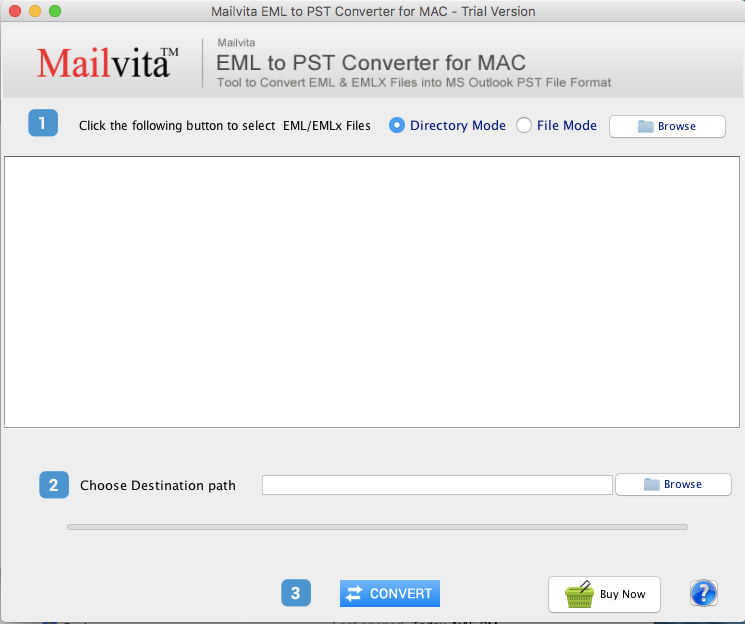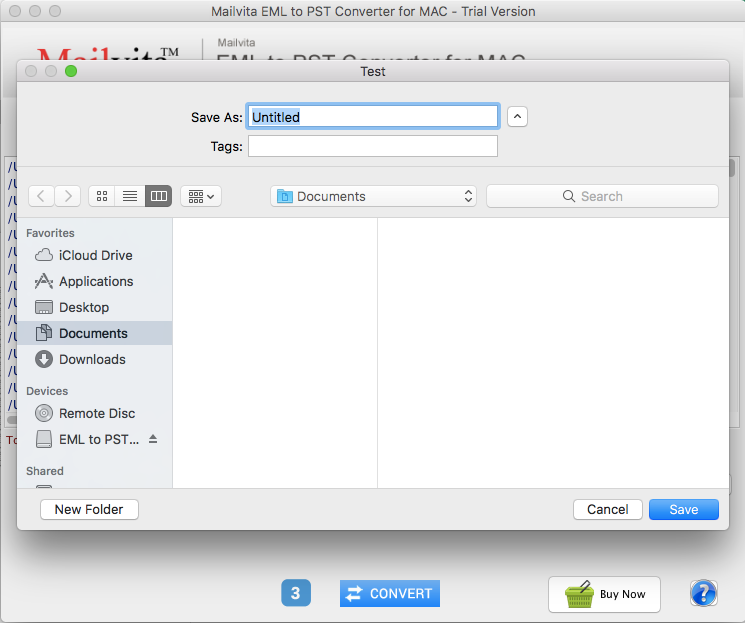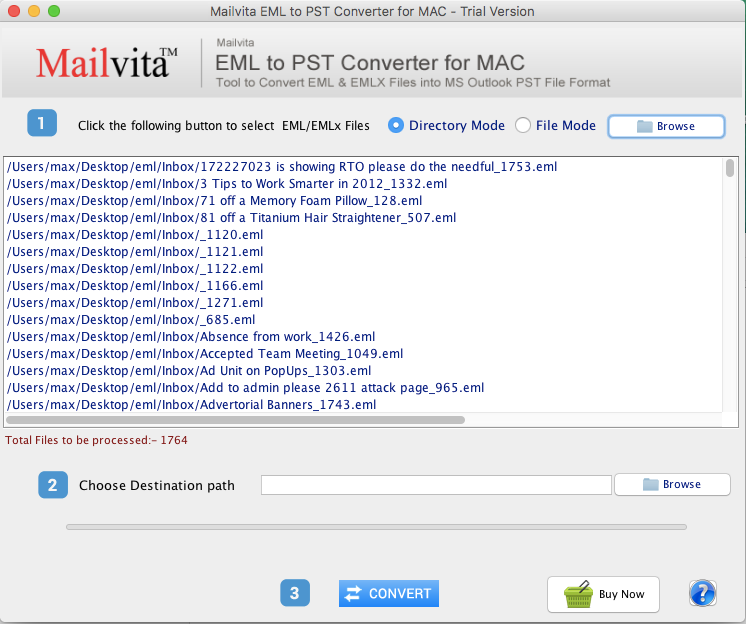Summary - Two popular email clients used by both consumers and enterprises are Windows Mail (EML) and Outlook (PST). There are a number of advantages to exporting Windows Mail to Outlook PST, including data consolidation, compatibility, migration, and access to more sophisticated capabilities. A professional utility, Windows Mail to PST Converter includes cutting-edge features, a preview option, preserving email attributes, conserving folder structure, supporting all operating systems and Outlook versions, no file size restriction, and an intuitive user interface. The above-mentioned techniques will help you convert Windows Mail data accurately and effectively to Outlook PST format so you can easily access your mailbox items in Outlook.
Windows Mail (eml) and Outlook (pst) overview
The two most frequently utilized email programs for managing email conversations are Windows Mail (EML) and Outlook (PST). While sending, receiving, and organizing emails is the same function served by both clients, their features, file formats, and compatibility are different.
Windows Mail (EML) is a Microsoft email client that comes pre-installed on Windows operating systems. Individual emails are saved in the EML (Electronic Mail) file format. The whole email message, including the header data, message content, and attachments, is included in an EML file, which is a plain text file. Users may connect to different email servers and access their email accounts thanks to Windows Mail's support for industry-standard email protocols including POP3, IMAP, and SMTP. Other email clients support EML files widely, which makes it simple to move and distribute emails among many systems.
Outlook (PST) is a complete personal information management tool that was created by Microsoft and contains email, a calendar, contacts, and other capabilities. Outlook stores email messages, calendar entries, contacts, tasks, and other data in PST (Personal Storage Table) files. Other email efforts cannot readily access the PST file since it is a proprietary format that is only compatible with Outlook. Outlook, however, offers sophisticated features such as strong email filtering, productivity tools, integration with Microsoft Office initiatives, and compatibility with Microsoft Exchange Server. Users with heavy email usage and intricate organizational requirements might benefit from the PST file formats effective storing and retrieval of massive volumes of email data.
Exporting Windows Mail to Outlook PST can be beneficial for several reasons.
- Migration to Outlook: Exporting Windows Mail data to Outlook PST enables you to effortlessly move your emails, contacts, calendar entries, and other data from Windows Mail to Outlook as your primary email client. This guarantees that you won't lose any data as you continue to browse your email content in Outlook.
- Compatibility: Outlook is frequently used in professional settings and is compatible with a number of cutting-edge features and integrations. You can assure compatibility with other Outlook users and benefit from features like email filtering, rules, and sophisticated organization choices by exporting Windows Mail to Outlook PST.
- Data Consolidation: Exporting Windows Mail to Outlook PST enables you to bring together all of your email information into a single file format, even if you have been using numerous email clients or have email data stored in various formats. This makes data management easier and makes it simpler to archive, find, and organize your emails.
- Backup and recovery: Exporting your email data from Windows Mail to an Outlook PST file gives you a second copy for safety. You can simply backup and restore PST files, allowing you to protect your emails and retrieve them in the event of data loss or system malfunctions.
- Access to Advanced capabilities: Outlook provides a large selection of advanced capabilities, including task management, scheduling, and interaction with Microsoft Office applications. Utilize these advantages by converting Windows Mail to Outlook PST to improve workflow and productivity.
To perform the export from Windows Mail to Outlook PST, you can use specialized tools or methods. Some third-party software applications are available that can assist in the conversion process, ensuring that your Windows Mail data is accurately transferred to Outlook PST format.
Export Windows Mail to Outlook PST - Professorial Method
To Convert Windows Mail to Outlook PST using the professional method with Export Attachments from Windows Mail to Outlook, follow these steps:
- Download and install Windows Mail to PST Converter for Mac on your computer.

- Launch the software and select the “Directory Mode” Or "File Mode" option and Click on Browse Button.
- The software will scan and load the added Windows Mail files. You can preview the mailbox items before conversion.

- Select the Destination path of your File and Click on the Browse Button.
- Click on the "Convert" button.

By following these steps, you can export Windows Mail to Outlook PST using Export Windows Mail to Outlook PST Tool. This professional method ensures accurate and efficient conversion of Windows Mail data to Outlook PST format, allowing you to access your emails & attachments items in Outlook with ease.
Advanced Features offered by Windows Mail to PST Converter.
Bulk Conversion: The software supports batch conversion, allowing you to export multiple Windows Mail EML files to Outlook PST simultaneously. This feature saves time and effort, especially when dealing with a large number of emails.
Preview Option: Before performing the conversion, it provides a preview of the selected EML files. You can preview the email content, attachments, and other details to ensure accuracy and verify the integrity of the data.
Maintain Email Properties: The tool preserves the original email properties, such as sender, recipient, subject, date, and attachments, during the conversion process. This ensures that all the crucial information associated with each email is retained in the resulting PST file.
Preserves Folder Structure: During conversion, the application keeps the Windows Mail folder hierarchy. This means that Outlook will effectively resemble your folder structure, including subfolders, making it simpler to find and manage your emails.
Supports: The software is compatible with every Mac and Windows OS version. Additionally, it supports all MS Outlook versions, including 1997 and 2021.
No File Size Limitation: Without any file size restrictions, the software can handle big EML files. The utility effectively converts EML files, no matter how big or tiny, to PST format.
User-Friendly Interface: An easy-to-use interface that requires no technical knowledge allows both new and experienced users to explore and complete the conversion process.
Windows Mail to PST Converter offers extra cutting-edge capabilities that improve the conversion process overall and give flexibility, ease, and accuracy when converting Windows Mail EML files to Outlook PST.
Conclusion
The two most widely used email Clients for managing email conversations are Windows Mail (EML) and Outlook (PST). Both clients have the same functionality but differ in terms of features, file types, and compatibility. For a variety of reasons, including migration, compatibility, data consolidation, backup and recovery, and access to advanced features, exporting Windows Mail to Outlook PST can be useful. You can utilize specialized programmed or techniques, like Windows Mail to PST Converter, to carry out the export. This expert programmed comes with cutting-edge features like no file size restriction, bulk conversion, preview option, retaining email properties, preserving folder structure, supporting all operating systems, and Outlook versions. These capabilities improve the conversion process overall and provide accuracy, flexibility, and simplicity when converting Windows Mail EML files to Outlook PST. You may access your Emails and Attachments mailbox items in Outlook with ease if you follow the above-described procedures to guarantee that your Windows Mail data is appropriately migrated to Outlook PST format.